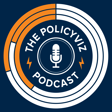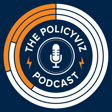
Data with Heart: Giorgia Lupi’s Journey from Visualization to Human Connection
Georgia Lupi joins the show to discuss her work in data visualization, her journey from Accurat to Pentagram, and how she takes a human-centric perspective to working with and communicating data. Our conversation also focuses on her new book, “This is Me and Only Me.” The book encourages kids to observe and collect data to understand emotions and human questions, using symbols and colors to express emotions. Giorgia hopes the book will inspire kids and adults to be imaginative, observant, and mindful. We also have some breaking news on this episode because Giorgia is working on another big project, a new book called “Speak Data” that explores data as a language intersecting various fields.
Keywords: data with heart giorgia lupi’s journey from visualization, heart giorgia lupi’s journey from visualization, giorgia lupi’s journey from visualization to human connection, lupi’s journey from visualization to human, heart giorgia lupi’s journey, data with heart giorgia lupi’s journey, giorgia lupi’s journey from visualization, giorgia lupi, dataviz, data visualization, human connection jon schwabish, jon schwabish, visualization, lupi’s journey, heart giorgia, mathematics, Al, machine learning
Subscribe to PolicyViz Podcast wherever you get your podcasts.
Become a patron of the PolicyViz Podcast for as little as a buck a month
Follow Giorgia on Twitterand find her book “This is Me and Only Me” on Amazon
Follow me on Instagram, LinkedIn, Substack, Twitter, Website, YouTube
Email: jon@policyviz.com

